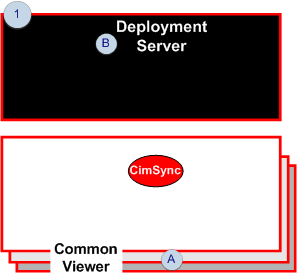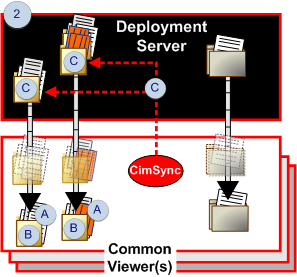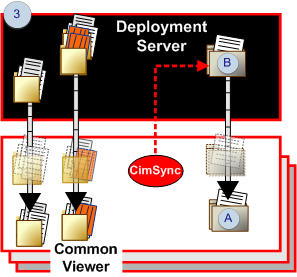When the Viewer specifications are planned out, there may be several viewers that are the same. These viewers can be grouped under a "COMMON' Viewer designation.
|
Group together viewers that have the same specifications. |
|
|
Identify files and folders that will be synchronized. |
|
|
Synchronize the configuration file. |
Group together viewers that have the same specifications.

|
A |
Viewers grouped under a 'COMMON' Viewer do not have to be identified by name. |
|
B |
The deployment server name must be the exact name identified on the Computer Name tab in the Windows System properties dialog box. |
Identify files and folders that will be synchronized.

|
A |
Exactly what files and/or file types on the common viewers will require synchronization. |
|
B |
The local (target) folder path on the viewers that hold the identified files. The local path must be the same for every viewer included in the synchronization. Note: The temporary folder on the viewer is automatically created. |
|
C |
Each shared folder on the deployment server that holds the source files that will be deployed to the viewer.
|
Synchronize the configuration file.
A 'COMMON' viewer should use an automatically synchronized configuration file.

|
A |
The target folder on the viewer is always in the Installation \Data directory. |
|
B |
The UNC path on the deployment server for viewers that should have the configuration file, gefdepl.dplcfg, automatically synchronized with the server. Notes
|
|
Step 1. Plan deployment configuration. |